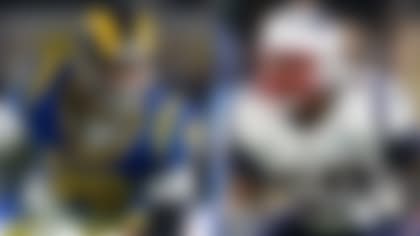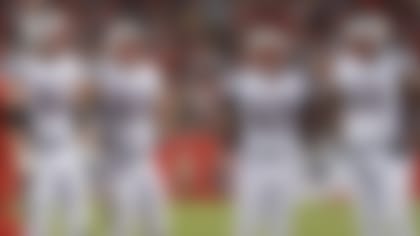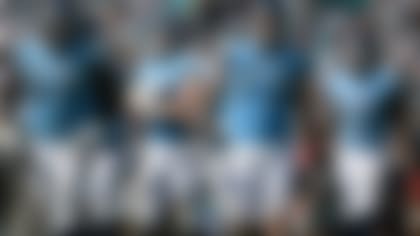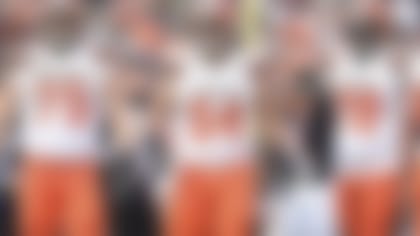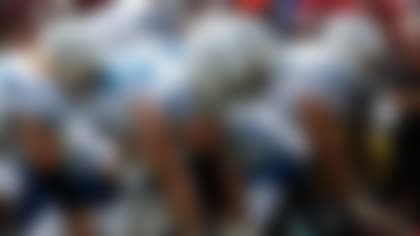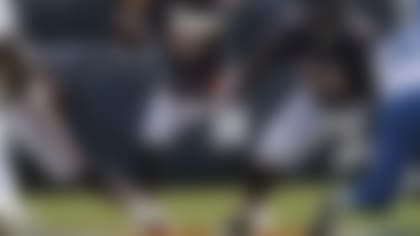The Los Angeles Chargers entered Week 16 as one of the sudden darlings of the league. Fresh off a stunning comeback win over the Kansas City Chiefs, the Chargers were rolling -- but ran into a brick wall in the form of the Baltimore Ravens.
Baltimore pressured Philip Rivers early and often (43.9 percent of pass drops, the most all season for the Chargers, per Next Gen Stats), wreaking havoc and undercutting Los Angeles' offensive efforts. A comeback attempt was stopped short, because the Chargers couldn't protect Rivers long enough to secure another surprising win.
Let's go Behind the O Line to find out if there are larger issues with the men tasked with protecting Rivers.
We'll start in Week 14, when the Chargers hosted the Cincinnati Bengals.
Cincinnati has been on a significant slide since Week 9, winning just one game in that stretch of time. Their defense, thought to be effective at pressuring opposing passers, hasn't found such envisioned success. But they still present a challenge -- and challenge the Chargers they did.
The first Chargers weakness exposed by the Bengals is simple: Los Angeles' guards struggle against slanting rushers. Geno Atkins and Christian Ringo both found success when employing this tactic, and Atkins' top-notch hand skill kept interior linemen from getting their hands on them. Too often, both Michael Schofield and Dan Feeney get turned in pass protection, giving up solid position in an attempt to salvage the block. These rushers then get up field and pressure Rivers, who's forced to get rid of the ball at his own risk.
On this particular play, a stunt catches center Mike Pouncey by surprise and he's caught upright in the chest by Ringo, who drives him back into Rivers for a combined sack.
This was extremely apparent a week later against the Chiefs, when Chris Jones has his way with Schofield.
Jones, a Pro Bowl snub whose tape makes it clear he deserves to be in Orlando, dominated Schofield with a variety of quick initial moves. Quick cuts inside turned Schofield often, who was left to attempt in vain to lunge and engage Jones, who earned leverage and blew past him for multiple shots at Rivers.
On this play, Jones' move inside gets him past Schofield and directly in the face of Rivers, who somehow completes a pass to Tyrell Williams. But in other instances, Jones ended up recording a sack.
The Chargers seem almost overeager to help with stunts, often sliding four linemen one way and leaving a backside tackle to step and hinge. It works at times, but sometimes gets them in trouble against multi-man stunts, in which sliding linemen meet defensive linemen moving in the opposite direction. They're left out of position, only to lunge in vain to get pieces of rushers.
They also seem to struggle with handing off rushers to each other. It looks like a miscommunication issue, and heavy feet on the part of Feeney and Schofield don't help. This creeps up in both one-on-one situations against agile rushers, in which initial moves leave them lunging and the at a loss of leverage, and against stunts when they don't have the quickness to recover in time to keep a rusher from getting near Rivers. It's almost as if the Chargers are anticipating stunts and react as such, and are sometimes left looking foolish when it doesn't happen. And when it does, sometimes their overeager approach to pass protection leaves the interior out of position, too far on one side or the other to properly take on rushers.
Los Angeles attempts to remedy this by sending Pouncey on some unlikely paths to help with above-average interior rushers. Sometimes, it works, but other times, it leaves massive rush lanes open and the Chargers highly vulnerable to delayed blitzers. That happened on this play, when Pouncey correctly takes on a stunt by Atkins, but Feeney chases him, leaving the backside wide open for linebacker Nick Vigil and cornerback Darqueze Denard to sprint in unblocked, forcing Rivers to get rid of the ball for an incompletion.
On a positive note, the Chargers are mostly consistent when running play action, keeping defenses from entering full-blown rushes. They win most of these matchups, whether with two men occupying one rusher or just individual linemen keeping rushers at bay.
Rivers has kept this offense moving despite these issues because he's excellent at navigating the pocket to avoid pressure and fire passes to receivers at any depth down the field. He'll get the ball out quickly to shorter targets, find intermediate routes by lofting the ball over defenders and even heave passes up for his excellent group of pass-catchers, who do the rest by making unlikely grabs or creating separation just before the ball arrives. Mike Williams does the latter on this reception just before halftime in Week 15.
But is it really sustainable?
The blueprint to beat the Chargers is on the tape: Use your best interior rushers on slants and twists and let the Chargers' interior linemen chase them, or struggle to maintain position in one-on-one situations. If your rushers are quick, chances are they're going to beat the slow-footed Chargers guards.
Now, back to that Kansas City game. The Chargers mounted one heck of a comeback in that game, in part because Kansas City, holding a 14-point lead, inexplicably stopped rushing more than four. This allowed the Chargers to dedicate two linemen to stopping Jones. It worked, as did quick passes thrown by Rivers, and ultimately Los Angeles pulled out the unlikely win.
That's situational defense, though, and can't be counted on for an entire game. The ideal strategy for Los Angeles is to get the ball out quickly, rely on play-action (which should be more effective now that Melvin Gordon is back from injury) and leave Rivers to make magic with desperate heaves to talented receivers, or on-target passes in short, tight windows.
It doesn't inspire a ton of confidence, but these aren't fatal flaws -- unless they run into the Ravens again and don't adjust accordingly.


